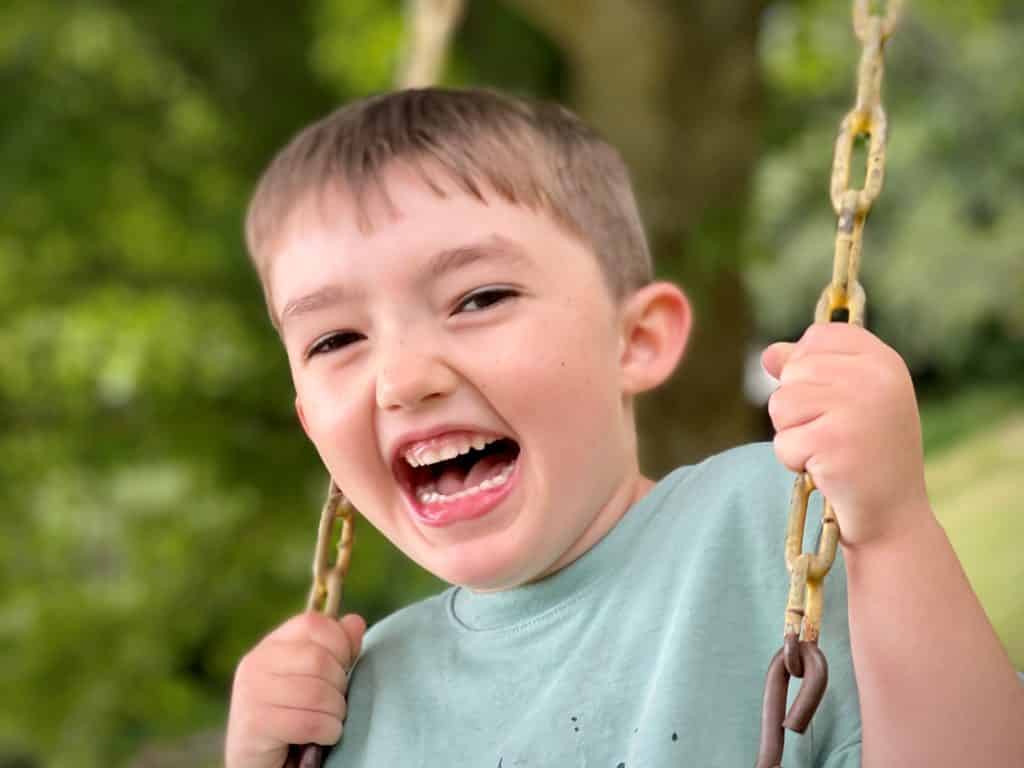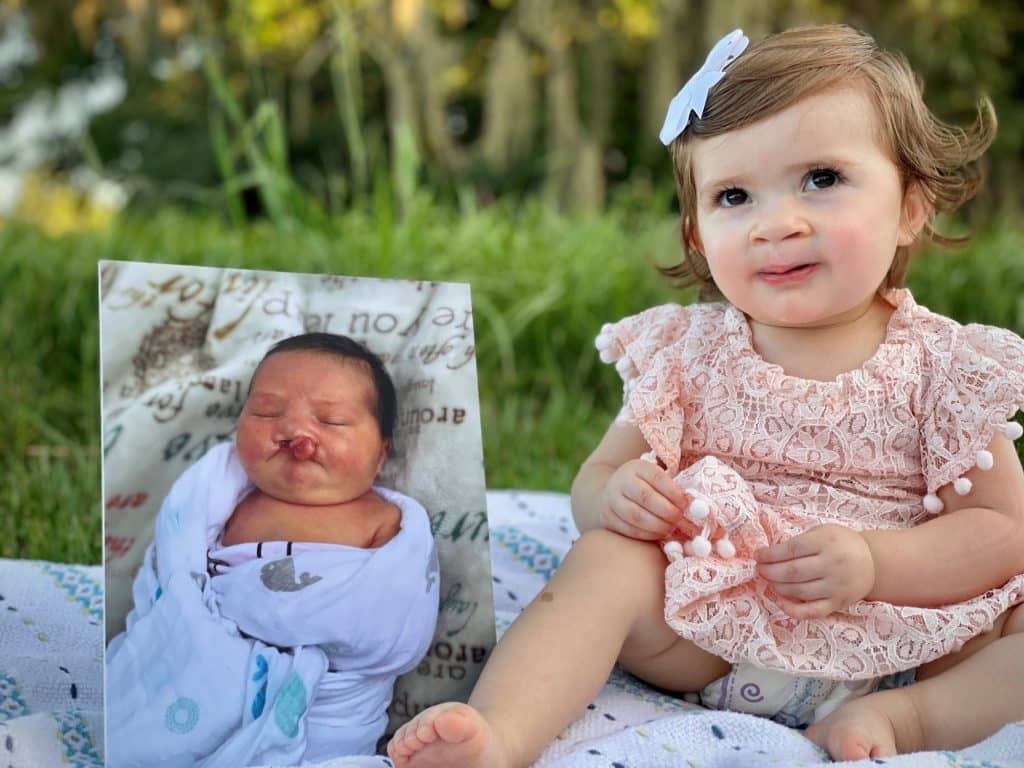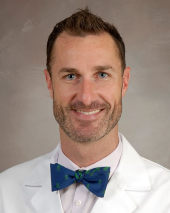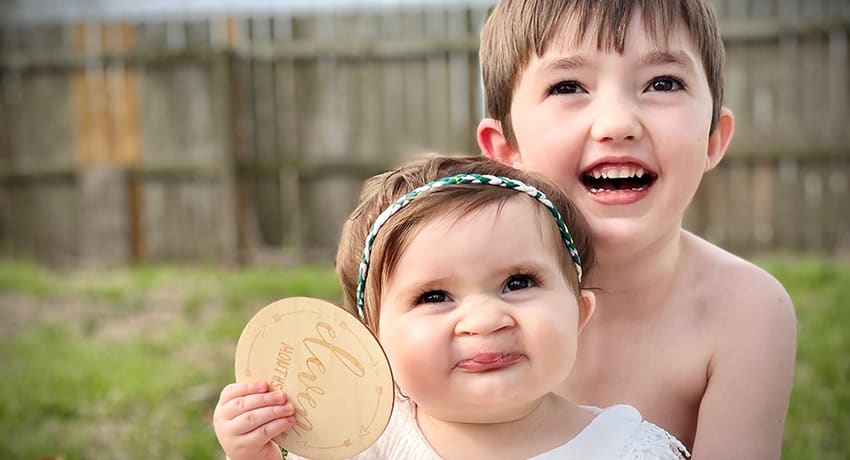As a mom to two wonderful children who each have their own cleft journey, Abby Freking is thankful for the help and guidance of the Texas Cleft-Craniofacial Team at UT Physicians.
Jax
Her oldest child, Jax, was born with a cleft in his soft palate. There was no external indication of his condition; Jax’s lip and hard palate were intact.
“Every ultrasound prior to birth, he appeared to be a healthy baby, without any issues,” said Freking. “Neither my husband nor I have a family history of cleft palate or lip, so there was no reason to suspect anything otherwise.”
Delivering in a small community hospital meant the staff had little experience caring for infants with a cleft palate. Before discharging their family from the hospital, they encouraged Freking to continue to attempt breastfeeding. Confident in her abilities as a new mother, she believed all would be fine.
However, just three short days later, reality set in.
“At our first doctor’s appointment when Jax was just a few days old, the pediatrician recommended we take him to the emergency room because he was becoming dehydrated. This is the point where I lost control and my husband’s steady personality took over,” shared Freking.
Children born with cleft palates can experience dehydration due to problems with sucking or swallowing, so breast or bottle-feeding may sometimes be challenging.
This incident, while devastating, did lead to a good thing — the Freking family received a referral to the Texas Cleft-Craniofacial Team to learn how to best care for a child with unique needs.

“We met with the team on a Saturday while we were actually still in the hospital helping Jax with feeding. I remember thinking they must have come in on their day off to speak with us,” said Freking. “They were all so patient and caring. We left that day feeling so well prepared to continue caring for our baby.”
The plan centered on Jax’s cleft palate repair surgery, performed by pediatric plastic surgeon Matthew R. Greives, MD. Grieves is director of the Texas Cleft-Craniofacial Team and associate professor and division director of pediatric plastic and reconstructive surgery at McGovern Medical School at UTHealth Houston.
Freking recalls their first meeting and Greives’ reassurance walking them through the entire procedure.
“He was confident but also so kind,” she shared. “He was able to give us a projection of what surgeries Jax would need to have in his lifetime, as well as what we could expect from a medical perspective.”
At 13 months old, Jax underwent his first surgery to repair his cleft palate and have ear tubes placed. Ear tubes are common to help children with cleft palates drain fluid and reduce the risk of infections and hearing difficulties.
During his recovery, Jax only ate pureed foods and liquids for over a month. To prevent him from reaching up and touching his face, he wore elbow immobilizers. Freking recounts while he was fussy and on pain medication for a week, he soon returned to his regular, happy self.
Zoey
When Jax turned 4, he learned he would become a big brother. Though not yet born, Zoey already shared a special bond with her sibling.
At her 20-week anatomy ultrasound, a doctor confirmed Zoey had a cleft lip and palate, though the severity was unknown.
“Similar to what I experienced with Jax, I went through another mourning phase after learning of her condition,” shared Freking. “However, I was able to go through the process prior to her birth and was at peace with it by the time she was delivered.”
To prepare Zoey for her first surgery to correct her cleft lip, Bhavini S. Acharya, BDS, MPH, pediatric dentist and associate professor and postgraduate program director in the Department of Pediatric Dentistry at UTHealth Houston School of Dentistry, was brought in for a critical role — nasoalveolar molding (NAM).
NAM is a removable device worn by a baby, held in place by tape beginning at 2 or 3 weeks of age and continuing up to their time of surgery. Weekly appointments are necessary for appliance adjustments to assist in the closure of the alveolar segments (gums) and nostril lift.
“With NAM, my husband and I were responsible for consistently keeping the appliance in Zoey’s mouth all day and night, except to clean it or when retaping her,” said Freking. “It was a lot of work, but the UT Physicians team prepared us and provided the support to make it possible.”

After this treatment was complete, Zoey was ready for her first surgery to repair her cleft lip at 4 months old. Similar to her brother, she wore elbow immobilizers and required pain medication. However, in one short week, she recovered from the procedure.
“Dr. Greives did an amazing job with her lip. Many people comment they cannot even tell she had a cleft lip,” said mom.
It wasn’t until she was 16 months old Zoey would undergo her cleft palate surgery.
Freking admits the first 48 hours after surgery were the hardest. Unlike her brother, who could be soothed with YouTube videos and his favorite toys, all Zoey wanted was to be held by her mother.

“We have pioneered novel postoperative pain management strategies here at UTHealth Houston and Children’s Memorial Hermann Hospital for our patients with cleft lip and palate that allow us to minimize the time patients spend in the hospital and reduce the overall narcotic pain medication we use for pain control after surgery,” said Greives, who is the Dr. Thomas D. Cronin Chair in Plastic Surgery at McGovern Medical School.
The cleft journey continues
Both Jax and Zoey will require additional surgeries or therapies as they get older. However, right now, they are just focusing on being kids. Jax is learning how to read and loves science. Zoey loves baby dolls and books — maybe soon her brother will read to her one day.
Seeing his patients grow into happy and healthy children warms Greives’ heart.
“Many kids with cleft lip and palate have never known or even seen another kid with the same problems. Jax and Zoey will grow up knowing they share so much more than just family, but a similar experience and challenge of living with a cleft lip and palate,” he shared. “My hope is that they find support in each other and realize while they are different from other children, they have someone who shares their cleft journey along with them.”
Freking admits while having a baby with a cleft can be hard, the Texas Cleft-Craniofacial Team at UT Physicians knows exactly what to expect and how to prepare parents so the experience is less overwhelming and more enjoyable.
To other parents who are just beginning their cleft journey with their little one, Freking has a simple piece of advice — give yourself grace.
“If you have never been a parent of a child with a cleft before, you are not expected to know it all and do it all exactly right,” she said. “Find joy in the little moments, like your baby’s first smile, and know this hard part is not going to last forever.”



